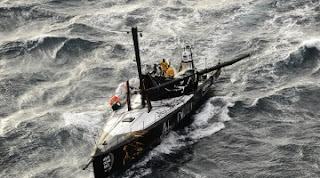Anasazi Strip is set in the isolated area north of the Grand Canyon known as the
Arizona Strip, a spectacular land of redrock and forgotten civilizations.
This is the first book in the Jenny Hatch mystery series, featuring
Forest Service archaeologist Jenny Hatch, a tough red-haired investigator who
has dedicated her life to unraveling the mysteries of the ancient Anasazi.
Anasazi Strip takes
us through strange lands rarely seen – Western Grand Canyon, the Kaibab National
Forest, the Paiute Indian Reservation, uranium mines, small Mormon towns, Lake
Powell, the underground art world where Indian artifacts fetch big money from
anonymous buyers from around the globe, and the forbidding Paria Plateau where
all hell breaks loose at the Burial of the Magician.
Along the way we
meet many colorful characters that seem to leap off the page - brave
cowboys, dying Indians, the unluckiest birdwatcher on earth, drug-crazed bikers,
Jack Mormons, eco-terrorists, a soul-catching Killer who knows
the Ritual of the Feather and Fur, and
the unstoppable Jenny Hatch who enters the spirit world and comes out on the
other side.
You can purchase
“Anasazi Strip” @ Amazon Books: http://www.amazon.com/Anasazi-
Kindle
will be ready shortly.
**********************************
Kindle will be ready shortly.
******************************
While
working as a surveyor for the U.S. Forest Service on the North Rim of the
Grand Canyon during the rape and pillage years of President Ronald
Reagan, Steve Carr, a young man from back east learns surreal
survival lessons as he journeys into some of America's most
phantasmagorical lands and national parks where he encounters greedy
loggers, federal land barons drunk on power, brain-dead cowboys,
clueless tourists, strange Mormon polygamists, crazed firefighters,
amazing Anasazi ruins, mysterious Indians, canyon loonies, lady
travelers looking for fun and excitement, environmental terrorists,
menacing wild animals, and the outlandish characters who live at the
bottom of the earth. Each stand alone story is laced with lurid
flashes of forgotten Southwest history and sprinkled with a heavy
dose of sex, drugs, and rock-and-roll as the reader is transported
into a magical world where flash floods, broiling canyons, freak snow
storms, hallucinogenic visions, and bone-crushing rapids come alive
with all the power and the glory. Each struggle leads Steve closer
to a final confrontation with the Forest Service over the future the
Kaibab Forest and the essence of the Kachina Way.
You can purchase “The Canyon Chronicles” @ Amazon Books:
http://www.amazon.com/The-Canyon-Chronicles-Steve-Carr/dp/0615369995
http://www.amazon.com/The-Canyon-Chronicles-Steve-Carr/dp/0615369995
Kindle will be ready shortly.
******************************
Water Views brings together three of Annapolis' most famous chroniclers and represents three unique ways of looking at the water and the Chesapeake Bay way of life. This very unique book provides three lenses from which to view our beautiful and often troubled world: the written word, the black & white photo image, and the satirical political cartoon.
Collected here, Stephen Carr's informative and humorous stories testify to his intimate knowledge of the Chesapeake Bay region and his intense concern for its well-being. Gained through his personal experience in the great outdoors, Steve's essays represent urgent advocacy for environmental resources that continue to be at risk and his deep appreciation for all the Bay has to offer.
Water Views is beautifully enriched by compelling images from the collection of nationally esteemed photographer, Marion E. Warren, who seeks out and portrays his concern for the fragile and precarious harmony of the Chesapeake Bay country. Marion's meritorious stream of published photographic essays have educated and delighted us with the earliest visual images of daily life in Maryland, and of its present condition, as portrayed in his Maryland Time Exposure, and Bringing Back the Bay. Marion's participation in this book underscores his enduring celebration of, and support for, the Bay country and the way of life dependent upon its preservation.
To round out the Bayview picture, the absurdly apt cartoons of Eric Smith furnish caustic editorial comment aimed cynically at the complacency that is our sin. For 35 years, Eric's award-winning caricatures have amused and outraged readers of The Capital, Annapolis' daily newspaper.
Water Views was published by The Annapolis Publishing Company. The coffee table, soft-backed edition sells for $20.00 (includes postage).
To purchase Water Views, contact Steve Carr at: steve.carr567@gmail.com










 For the next race everything is changing, with one design for all teams. Why?
For the next race everything is changing, with one design for all teams. Why?








+-+Paul+Todd-Volvo+Ocean+Race.jpg)

































